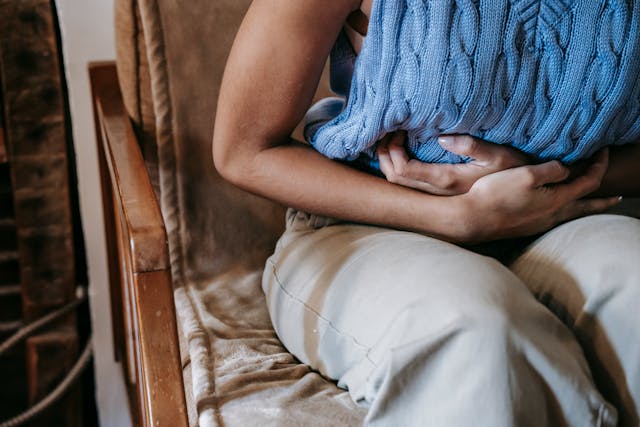
What are gallstones? They are hardened deposits of bile that can form in the gallbladder and cause problems.
We need to start by looking at what the gallbladder is and what it does. The gallbladder is quite small and it is located just under the liver, at the bottom of the stomach. It is about 7 to 10 cm long, so a pretty small organ. Its job is to store bile and then release it into the stomach as and when needed. We need bile to help us digest the fats that we eat. It is yellow-green and it is very sticky. Bile is produced in the liver and it is made up of bile acids, cholesterol, water, pigments, complex fats, electrolytes (bile salts), and some metals. Our livers produce close to 1 liter of bile every day. Without bile, we wouldn’t be able to digest the fats we eat and we wouldn’t be able to break down bilirubin, which is a byproduct of the hemoglobin in red blood cells. When we eat fatty food, we can break down and absorb many of the things in it, but we cannot absorb the fat because it is hydrophobic, which means it is afraid of water. Fats and water don’t mix, as you know if you have tried to wash a greasy frying pan using only water. To break down and absorb the fats, we need to use a special kind of enzyme that is not water-based. The first round of these are in our saliva and they start to break down the fat. Then it travels to the stomach and about 30% of the fat is broken down and absorbed here. The remaining fat moves on into the small intestine and the gallbladder releases its bile. The bile attaches to the fat molecules and increases their surface area, giving the enzymes more chance to break them down. Then the bile helps guide the broken down fat to the tiny hairs that line the intestine where the fat can be transported away. The cholesterol in the bile attaches to the fat to transport it. Without our bile, most of the fat we eat would just go straight through us and we would miss out on all of that concentrated energy.
To be honest, we don’t actually need our gallbladders and people who have had them removed have absolutely no trouble whatsoever. The gallbladder stores bile to be pumped into the small intestine as soon as it is needed, but it doesn’t contain much bile and the rest of it comes directly from the liver. If you have your gallbladder removed, the liver can just pump bile directly and there is no problem.
So, what are gallstones? They are technically called cholelithiasis and they form when bile in your gallbladder hardens. Just like kidney stones, they start to form when one of the constituents of bile begins to crystalize. This can be the cholesterol, the bile salts, or the bile pigment. If you have too much of any one of them, that substance can begin to crystalize and clump together, just like snow on a snowball. Then, once they have started, they attract more and more of the same substance. If bile salts have started it, for example, the crystalized bile salts will sit there and every time bile washes over them, more bile salts will stick to the growing gallstone. They can become bigger and bigger. Most people don’t notice them until they get bigger and start to move. When they move, they can block one of the bile ducts, and that causes intense pain. Because of their location, it can be pain all across the chest and back and it can be mistaken for a heart attack. If a gallstone blocks up a duct in your gallbladder, it can be dangerous because the bile behind it starts to back up and this can cause inflammation and infection. It is very rare to die from gallstones and if anyone did die, it would be from infection that could become septicemia.
They are fairly common. About 10% of people have them, and 75% of those people are women because of the higher levels of estrogen that they have. Estrogen increases the amount of cholesterol in bile, which can cause gallstones to form. Gallstones can be removed surgically, if necessary, but most commonly, patients are given drugs that can dissolve the gallstones. And this is what I learned today.
Photo by Sora Shimazaki: https://www.pexels.com/photo/woman-suffering-from-a-stomach-pain-5938358/
Sources
https://www.medicalnewstoday.com/articles/fat-digestion#fat-digestion
https://www.ncbi.nlm.nih.gov/books/NBK279386
https://www.healthline.com/health/what-is-bile#production
https://www.verywellhealth.com/definition-of-bile-1759867
https://my.clevelandclinic.org/health/body/21690-gallbladder
https://www.hopkinsmedicine.org/health/conditions-and-diseases/gallstones
https://www.mountsinai.org/health-library/report/gallstones-and-gallbladder-disease
